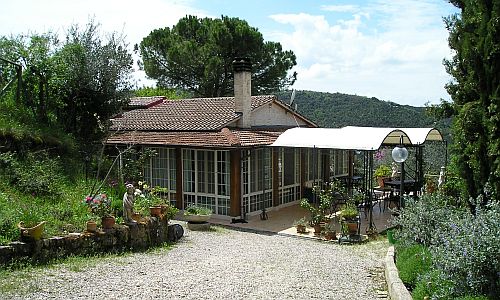Bettona
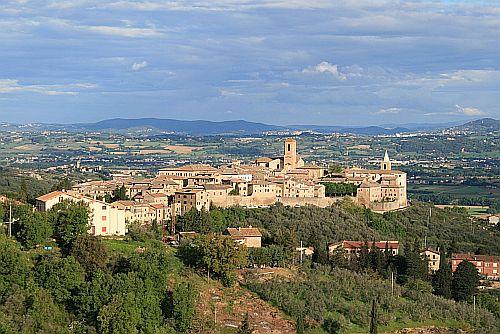
Bettona is situated on a hill in the middle of Umbria, with stunning views of cities like Perugia, Assisi, Spello. The promenade along the ancient walls is like looking from a balcony, you see the Umbrian plain on one side and the "Monte Martani" on the other hand.
Bettona belongs to "i Borghi più belli d'Italia", the finest medieval villages of Italy.
It has only 4,400 residents.
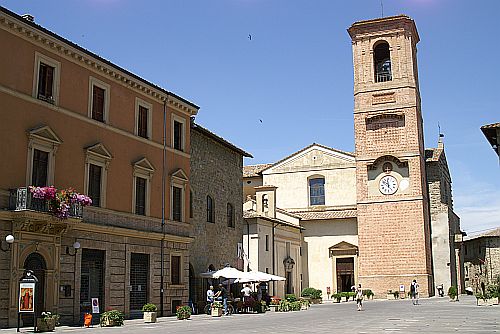
History
No doubt the origin of Bettona is Umbro-Etruscan, as evidenced by numerous archaeological finds and is still visible in the well-preserved city walls. In some parts of the wall the Etruscan stone, are very visible. In addition, under Bettona, near the village of Colle, a etuscan mausoleum has been found from the 2nd century BC.
In 114 AD. it is already called by the historian Pliny in the books as Vettona. In those time Bettona was an important place because it was a strategic military location.
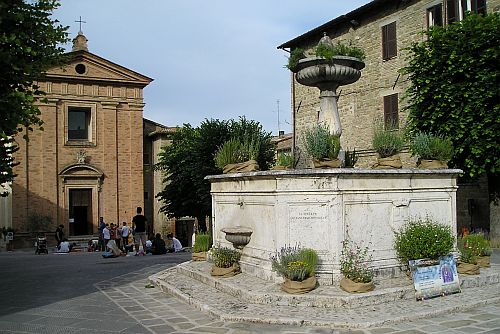
During the struggle between the Guelph (supporters of the pause actual authority) and the Ghibellines (supporters of the imperial authority) Bettona was in 1352 by Perugia conquered and partially destroyed. In 1367 Bettona came to fall under the authority of the Pope. Then the Pope gave the city loan to the noble family Baglioni, whom built the Palazzo del Podesta and a beautiful country house in the village Passaggio di Bettona. In 1648 Bettona came, like many other Umbrian towns, again under the authority of the Pope until the unification of Italy 1861.
>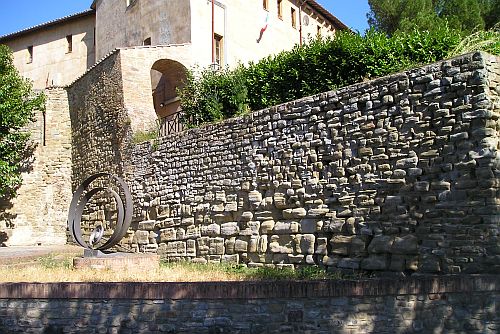
Sights
- The city wall which completely surrounds Bettona, contains large pieces of wall made by the Etruscans, the rest is mostly from the Middle Ages. The Etruscan part can be seen near the city gate, where you can ride in by car. Before the gate you get the feeling that you are on the balcony of Umbria state as far as you can see.
- In the village of Colle, just below Bettona, you will find an tomba Etrusco, an Etruscan tomb. The finds can be seen in the Museum of Bettona and the most special in the Archaeological Museum in Perugia.
- Santa Maria Maggiore (13th century), in Piazza di Cavour, the main church of Bettona. Gothic chapel, dedicated to Santa Rita, is the only remaining part of the former Romanesque church. The church was rebuilt in the 17th century. The beautiful main altar has the shape of a temple; it was created by Cruciano Egiduzio. The beautiful frescoes in the apse are made in 1939 by Gerardo Dottori.
- The Church of San Crispolto is already built in the 8th century by monks Benetictijner to keep the body of the patron. It is built in the shape of a Latin cross. The church is in the course of time renewed several times. The bell tower was added during the Romanesque period to the church. The facade is built in the late 18th century by Antonio Stefanucci. In the left transcept 36 paintings tell The legend of San Crispolto. You can also find the silver bust of the patron with a dagger through the head. Next to the church is the old Benedictine monastery. Walk quietly inside, you'll find a door with a staircase behind it. Through these steps you walk underground to a pedestrian gate in the city wall. Once you're outside you can enjoy the great view of Assisi, Perugia and Spello.
- Oratorio di Sant'Andrea was built in the 12th century. The frescoes from the school of Giotto (1394), they depict the suffering of Christ. By chance discovered, for they had painted over it. The beautifully carved woodwork of the ceiling is from the 16th century. The Baroque altar was added later.
- Just outside the walls is the Monastery of Sant 'Antonio built by Franciscan monks in 1502 on the ruins of an old castle.
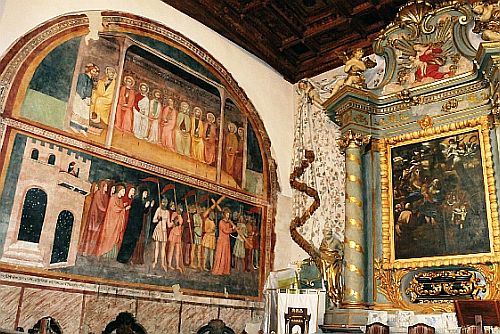
Museums
- Pinacoteca, the museum, in the Palazzo del Podestà (built in 1371) has two beautiful paintings of Perugino, the Madonna della Pietà and Sant 'Antonio di Padova (1512-13). There are also works by Iacopo Siculo, Dono Doni, Fiorenzo di Lorenzo and Della Robbia to admire, archaeological finds and ceramics. Via a staircase down, you arrive under the market square, foundations from Roman times and a medieval well will be seen.
Festivals, events
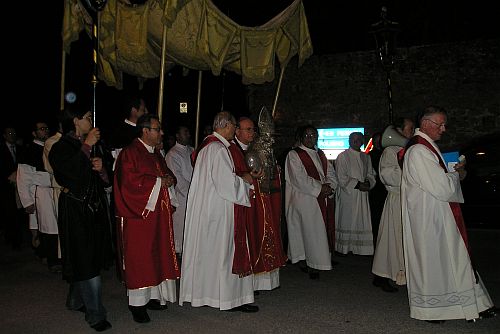
- Processions and the Passion Play: Good Friday, Easter
- Feast of the Patron San Crispolto: May 11 + 12
- Giardini segreti, the secret gardens: June
- Sagra del Oca: starts last Friday in July and then for 10 days
- Presepe Vivente: from Christmas until January 6th
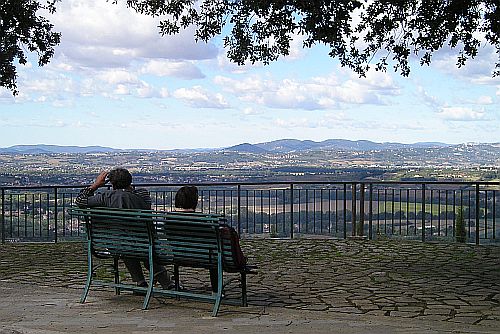
View of Perugia
